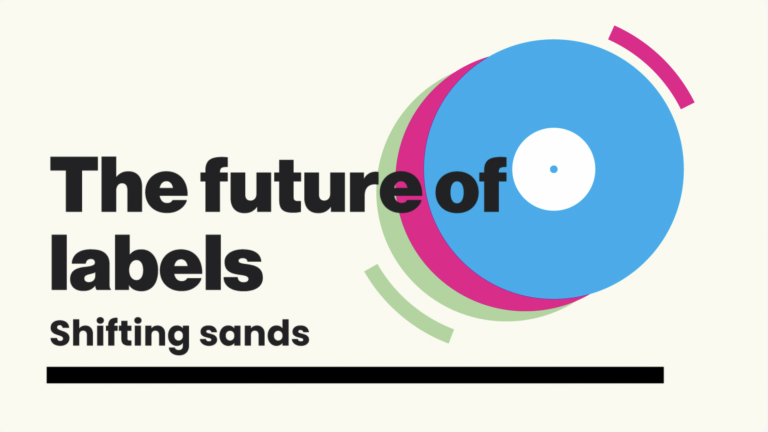
Ever wondered how music and meditation go together? Like, really go together? It turns out, there’s a lot more to it than just putting on some calming tunes. This article will look at how sounds can help us find a bit more peace inside. We’ll talk about how music affects our brains, how we can use it to feel more calm, and even how it connects to bigger spiritual ideas. Basically, we’re figuring out how to use music to chill out and feel better.
Key Takeaways
- Music can change your brain activity, helping you relax and focus.
- Listening to music mindfully can help you feel more present.
- Picking the right kind of music can make your meditation better.
- Music is used in lots of spiritual practices, like yoga and guided meditations.
- Using music can help you feel less stressed and more aware of yourself.
The Science Behind Music and Meditation

How Meditation Music Affects the Brain
It’s pretty wild how much music can do for your brain, especially when you’re trying to chill out or focus. It’s not just about having some nice background noise; there’s actual science behind how certain sounds can change what’s going on inside your head. Think about it: the steady hum of a singing bowl or the gentle strumming of a guitar can really shift your mood. Scientists have looked into this, and they’ve found that these sounds can mess with your brainwave patterns, how many feel-good chemicals your brain makes, and even how you process emotions. It’s like your brain is tuning into a different station, one that’s all about relaxation and being present. Understanding this stuff can help you pick the right tunes to get the most out of your meditation time, making it easier to clear your head and feel more balanced.
Brainwave Entrainment
So, one of the coolest things music does is something called brainwave entrainment. Basically, your brain has these electrical patterns, called brainwaves, that change depending on what you’re doing. When you’re super busy and thinking hard, you’ve got these fast beta waves. But when you’re relaxing or meditating, your brain shifts to slower alpha and theta waves. Alpha waves are all about being relaxed but still alert, and theta waves are linked to deep focus and creativity. Certain sounds in meditation music, especially those with specific frequencies, can actually help your brain switch over to these calmer wave patterns. It’s like your brain starts to sync up with the music. Studies using EEGs, which measure brain activity, have shown this happening. For example, people who meditate a lot often have more theta waves. And there’s this thing called binaural beats, where you hear slightly different frequencies in each ear, and that can also help push your brain into those deeper, more relaxed states. It’s not just some woo-woo idea; it’s a measurable thing that shows how music can really guide your brain.
The Power of Sound: Unlocking Inner Realms
Sound isn’t just something you hear; it’s a force that can really get into your head and change things. When we talk about unlocking inner realms, we’re talking about how certain sounds can help you go deeper into your own mind, beyond the everyday chatter. It’s like sound acts as a key to different states of consciousness. This isn’t a new idea; cultures all over the world have used sound for centuries in their spiritual practices. Think about chanting, drumming, or the vibrations from gongs – these aren’t just random noises. They’re designed to create specific effects on your mind and body. For example, some sounds can help reduce stress hormones like cortisol, making you feel calmer. Others can help you focus better or even spark creativity. It’s about using sound as a tool to explore your inner landscape, to find a sense of peace and clarity that might be hard to reach otherwise. Combining music listening with mindfulness can really help with this.
Cultivating Inner Peace Through Sound
Music and Meditation: Soundtracks for Inner Peace
Using music during meditation can really change things. It helps quiet your mind and makes your meditation feel deeper. Certain kinds of music work best for this, like ambient sounds, classical pieces, or world music that has a steady, repeating beat. The right music can act like a gentle guide, helping you settle into a peaceful state.
Here are some tips for picking music for meditation:
- Choose music that feels calm and doesn’t grab too much attention. Try to avoid songs with strong singing or sudden, jarring rhythms.
- Before you start the music, take a few minutes to just breathe mindfully. This helps your body and mind get ready.
- Play the music softly in the background. Let it gently pull your focus inward.
- Really pay attention to how the music feels. Notice what it does to your body and your emotions.
Experiment with different types of music to see what works best for you. The main idea is for the music to support your meditation, not to become a distraction.
Mindful Listening: Paying Attention to the Sound
To really use music for inner growth, you need to practice mindful listening. This means just listening to the music without judging it, letting yourself be completely present with the sounds. It’s about letting the music just be.
Mindful listening is a simple yet powerful way to connect with music on a deeper level. It’s not about analyzing the notes or instruments, but about experiencing the sound as it unfolds, allowing it to wash over you and bring you into the present moment.
Here’s how to practice mindful listening:
- Find a quiet spot where you won’t be bothered. Maybe dim the lights and make the area comfortable.
- Close your eyes and focus on your breath for a bit. This helps center you and calm your thoughts.
- Just listen to the music. Notice the different instruments, the melodies, and the rhythms. Let yourself feel whatever emotions come up without trying to control them.
- If your mind starts to wander, gently bring your attention back to the music. Don’t get upset or judge yourself.
Try to practice mindful listening regularly, even if it’s just for a few minutes each day. It helps you build a stronger connection with music and how it affects your inner self. For a truly immersive experience, consider trying sound bath meditations.
Choosing Calming and Unobtrusive Music
When you’re picking music for inner peace, the goal is to find sounds that support relaxation and focus, not ones that demand your attention. Think of it as background support, not the main event. The best music for this purpose often has a consistent tempo and a gentle, flowing quality.
Here’s a quick guide to what works and what doesn’t:
| Music Type | Good for Inner Peace | Not So Good |
|---|---|---|
| Ambient | Yes | |
| Classical (slow) | Yes | Fast, dramatic pieces |
| Nature Sounds | Yes | |
| Lo-fi | Yes | |
| Pop/Rock | No | Yes |
| Heavy Metal | No | Yes |
| Music with Lyrics | No | Yes |
Music that is too complex, has sudden changes, or includes vocals can pull your mind away from your meditation or reflection. The idea is to create an auditory environment that encourages stillness and introspection, allowing your thoughts to settle and your body to relax. Simple, repetitive, and harmonious sounds are usually the most effective for this purpose.
Exploring Musical Elements for Spiritual Enhancement
Harnessing Rhythm, Melody, and Harmony
When you really get into it, music isn’t just noise; it’s a carefully put-together thing with different parts that hit us in specific ways. Understanding how these parts work can help us pick music that really helps with our spiritual journey. Rhythm, melody, and harmony are the big three, and they each do their own thing to shape how we feel and think.
- Rhythm: Think about the beat of a song. It can make you want to tap your foot, or it can slow everything down. A steady, slow rhythm can help calm your heart rate and breathing, which is great for getting into a peaceful state. Fast rhythms, on the other hand, can get you pumped up. For spiritual practices, often a gentle, consistent rhythm is what you’re looking for.
- Melody: This is the tune, the part you hum. Melodies can be simple and repetitive, or complex and soaring. A simple, repeating melody can be almost like a mantra, helping your mind focus and let go of distractions. More complex melodies might inspire awe or a sense of wonder, depending on how they’re built.
- Harmony: This is about how different notes sound together. Some combinations of notes sound really pleasant and open, while others can feel tense or unresolved. Open, consonant harmonies often create a feeling of peace and spaciousness, which is perfect for meditation or reflection. Dissonant harmonies, while interesting, might not be what you want when you’re trying to find inner calm.
Choosing music with elements that fit your spiritual goal is key. For example, if you’re trying to meditate, a piece with a slow rhythm, a simple, repeating melody, and open harmonies would probably work better than something with a fast beat and lots of clashing notes. It’s all about what helps you get to where you want to be mentally and spiritually.
Music’s Influence on Emotional and Mental Wellbeing
Music has this amazing power to mess with our emotions and our minds. It’s not just background noise; it can really shift how we’re feeling. Think about how a sad song can make you tear up, or how an upbeat tune can instantly lift your spirits. This isn’t just random; there’s a lot going on in our brains when we listen to music.
Music can be a powerful tool for managing your mood. If you’re feeling stressed, putting on some calming music can help slow down your thoughts and relax your body. If you’re feeling down, something more uplifting can give you a boost. It’s like a direct line to your emotional control panel.
This influence extends to our mental state too. Music can help with focus, especially if it’s instrumental and not too distracting. It can also help with memory recall, which is why certain songs can bring back vivid memories from years ago. For spiritual practices, this means music can help you get into a focused, receptive state, or even help you connect with past spiritual experiences or insights.
Promoting Mindfulness Through Music
Mindfulness is all about being present, really paying attention to what’s happening right now. Music can be a fantastic tool for this. It gives your mind something to latch onto, something to observe, instead of letting it wander off into worries about the past or future. Binaural Meditation Sound Waves can be particularly helpful for this.
Here’s how music can help you be more mindful:
- Active Listening: Instead of just having music on in the background, try really listening to it. Notice the different instruments, the way the melody moves, the rhythm. This kind of focused attention pulls you into the present moment.
- Emotional Awareness: Pay attention to how the music makes you feel. Does it make you feel peaceful? Energetic? A little sad? Just noticing these feelings without judgment is a big part of mindfulness.
- Body Scan: As you listen, notice how the music affects your body. Do you feel a tingling sensation? Does your breathing change? This helps you connect with your physical self and stay grounded.
By using music as a focal point, you can train your mind to stay in the present. It’s like a gentle anchor that keeps you from drifting away. It’s not about analyzing the music, but simply experiencing it fully, moment by moment. This practice can then extend to other areas of your life, helping you be more mindful in general.
Real-Life Applications of Music for Inner Growth

Music isn’t just for background noise; it’s a tool you can actually use to help yourself grow. Think about it: we use music for all sorts of things, from getting pumped up at the gym to chilling out after a long day. When it comes to inner growth, music can be a real game-changer, helping you connect with yourself and find some peace.
Music in Guided Meditation
When you’re trying to meditate, sometimes your mind just won’t quit. That’s where music comes in. It can be a real anchor, giving your brain something to focus on besides your grocery list or that awkward thing you said yesterday. Music in guided meditation helps create a space where you can actually relax and let go. It’s like a gentle nudge, guiding you deeper into your own thoughts without being pushy. Plus, it can make the whole experience feel a lot more pleasant, especially if you’re new to meditating.
- It sets the mood, making it easier to transition into a calm state.
- It can mask distracting sounds around you, helping you stay focused.
- Certain frequencies and rhythms can help slow your brainwaves, making relaxation easier.
- It provides a consistent backdrop, so you’re not just sitting in silence, which can feel intimidating.
Music can be a powerful ally in your meditation practice, transforming a potentially challenging experience into one that feels natural and inviting. It’s not about replacing your own inner work, but rather supporting it, making the path to stillness a little smoother.
Music for Yoga and Movement
Yoga and other movement practices are all about connecting your body and mind. And guess what? Music is fantastic for that. It helps you get into a flow, moving with intention rather than just going through the motions. Imagine trying to do a sun salutation in complete silence – it just feels different. With the right tunes, your movements become more fluid, more intentional, and you feel more connected to what you’re doing. It’s like the music becomes part of your breath, part of your movement, making the whole experience more holistic. For [mindfulness through sound], music can be a great way to stay present during your practice.
Music for Spiritual Reflection
Sometimes you just need to sit and think, or maybe not think at all, just be. Music can be a great companion for spiritual reflection. It doesn’t have to be religious music; it can be anything that helps you feel connected to something bigger than yourself, or just helps you feel more grounded. It’s about creating an atmosphere where you can just exist, ponder, or simply feel. It’s a personal thing, what kind of music works for this, but when you find it, it’s like finding a quiet corner in a busy world. It helps you slow down and just be with your thoughts, or lack thereof.
The Deep Connection Between Music and Spirituality
Historical and Cultural Significance of Music
Music has been a part of human existence for a very long time, showing up in just about every culture you can think of. It’s not just background noise; it’s been used for all sorts of important stuff, from telling stories to celebrating big events. Think about ancient rituals where drums set the pace, or how different cultures use specific instruments to connect with their beliefs. Music often acts like a bridge, helping people feel closer to something bigger than themselves, whether that’s a god, nature, or just a sense of universal belonging.
- In many indigenous cultures, music and dance are central to ceremonies, used to heal, to pray, or to mark life’s passages.
- Religious traditions worldwide use hymns, chants, and instrumental pieces to create a sacred atmosphere and express devotion.
- Even in modern times, music plays a role in personal spiritual practices, helping individuals find calm or inspiration.
Music has always been more than just entertainment. Throughout history and across cultures, music has served as a powerful tool for spiritual expression, healing, and connection. The rhythmic pulse of a drum, the soaring melody of a violin, the meditative drone of a sitar – all can transport us to realms beyond the everyday, unlocking profound emotions and spiritual insights.
Music as a Universal Language
It’s pretty amazing how music can cut across all sorts of boundaries. You don’t need to speak the same language to feel the emotion in a song. A sad melody sounds sad no matter where you’re from, and a joyful beat makes you want to move. This shared understanding makes music a powerful tool for spiritual growth, allowing people from different backgrounds to connect on a deeper level. It’s like music speaks directly to your soul, bypassing words and cultural differences.
Music for Stress Reduction and Self-Awareness
Beyond its cultural and historical roles, music is also super effective at helping us chill out and get to know ourselves better. Ever put on some calming tunes after a rough day and just feel the tension melt away? That’s music doing its job. It can slow your heart rate, relax your muscles, and generally make you feel more at ease. When you’re less stressed, it’s easier to pay attention to your inner thoughts and feelings, which is a big part of becoming more self-aware. It helps you tune into what’s going on inside, giving you a clearer picture of your own mind and emotions.
Here’s how music can help:
- Calming the Mind: Gentle music can quiet the constant chatter in your head, making it easier to focus or just be present.
- Emotional Release: Sometimes, a song can help you process feelings you didn’t even know you had, offering a healthy way to let them out.
- Focus and Concentration: For some, certain types of music can actually improve focus, helping them concentrate on tasks or meditation.
- Self-Reflection: Listening to music can create a space for introspection, allowing you to think deeply about your life and experiences.
Conclusion
So, that’s the deal. Music and meditation really do go together, like peanut butter and jelly. It’s not some super complicated thing; it’s just about using sounds to help you chill out and feel more connected. You don’t need to be a guru or anything. Just pick some tunes that feel right, listen closely, and see what happens. It might just make your day a little bit calmer, a little bit brighter. Give it a shot!
Frequently Asked Questions
How does music affect my brain during meditation?
Music can help your brain in many ways during meditation. It can change your brainwaves, making you feel more relaxed or focused. It also helps your brain make good chemicals that improve your mood and awareness.
Are there specific types of music that are best for meditation?
Yes, certain types of music are better for meditation. Look for music that is calm and doesn’t have words. Ambient music, classical music, or world music with a steady beat often work well. The goal is for the music to help you focus, not distract you.
What is mindful listening and how can I practice it?
Mindful listening means paying close attention to the music without judging it. You simply listen to the sounds, notice the instruments, and how it makes you feel. If your mind wanders, gently bring it back to the music.
Why is music so important in spiritual practices?
Music has been used for spiritual practices for a very long time, across many different cultures. It helps people feel connected to something bigger than themselves, express deep feelings, and find peace.
Can music really help with stress and anxiety?
Music can help reduce stress and anxiety by lowering stress hormones and releasing feel-good chemicals in your brain. It can also help you be more mindful, focusing on the present moment and letting go of worries.
How can I use music in my daily life for personal growth?
You can use music in many ways for inner growth. It can be part of guided meditations, yoga, or just quiet time for thinking. Different kinds of music can help you feel calm, inspired, or even help you deal with tough emotions.





